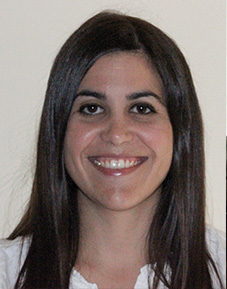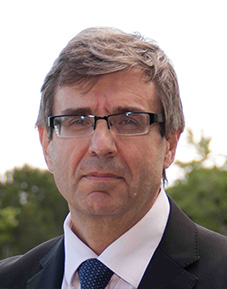Male edentulous patient aged 35 years, classification ASA type I, for maxilla rehabilitation with 8 Outlink2 implants with external connection (Sweden & Marina), using guided surgery with bone support and immediate loading. Simplant® software was used for the treatment plan and the production of a stereolithographed surgical guide.
A photographic study was made, including extra-oral photographs for the median facial line, parallelism between the bipupillary line and the intercommissural line, analysis of the facial thirds, type of profile and vertical dimension.
The preliminary impressions were taken with irreversible hydrocolloids (aligned) to obtain master study models. The facial arch and the intermaxillary registers were determined, for mounting in the articulator.
The basic structure was prepared with wax, then carrying out a trial of the teeth for the fixed prosthesis, on which the radiological-surgical guide would be based.
A CAT scan was made with a duplicate guide in the patient’s mouth. A preliminary study was then made by computer for the ideal position of the prosthesis on the dental implants.
This transfer of the position of the implants stabilized in the pre-surgical phase made it possible to develop the prosthesis for immediate loading in advance.
After assessing the clinical conditions of the study, the type of surgical guide most suitable for the patient was chosen, on the basis of bone support.
The radiographic study was used:
To make the CAT scan after occlusion was tested with the duplicate of the radiographic guide, as explained earlier.
To reconstruct the CAT scan images using the specific software for this surgical procedure.
To determine the ideal site for the positioning of the implants according to the available bone, the final prosthesis and the anatomical structures.
The patient presented at our surgery after the study had been completed using the software, with both the radiographic and the clinical data. All information was sent to the technical centre for preparation and return of the surgical guide before surgery.
A total-thickness flap was first raised, fixing the stereolithographed surgical guide with two lateral pins and with surgical implants in each arch. A posterior milling protocol was performed through the guide, which was oriented on the inclination/angle of the alveolus.
The immediate prosthesis was then produced. The immediate prosthesis was adapted in the same surgical phase with an acrylic eggshell temporary, which had been made previously in the articulator above the temporary anti-rotation posts, according to the position of the planned implants.
The acrylic temporary had perforations for the exits of the fixation screws of the temporary posts, to avoid escape of the self-polymerizing acrylic during relining, and to obtain a fixed but removable prosthesis. After hardening, excess material was removed from the model. Finally, it was screwed onto the posts again and sealed with cotton and acrylic.
The use of guided stereolithographed surgical guides represent a step forward in oral implantology. With meticulous planning and appropriate software, predictable results can be obtained due to the study performed, but at a more expensive cost than with conventional methods.
The technique described requires long-term research and improvements to the fixing points for ferrules.



